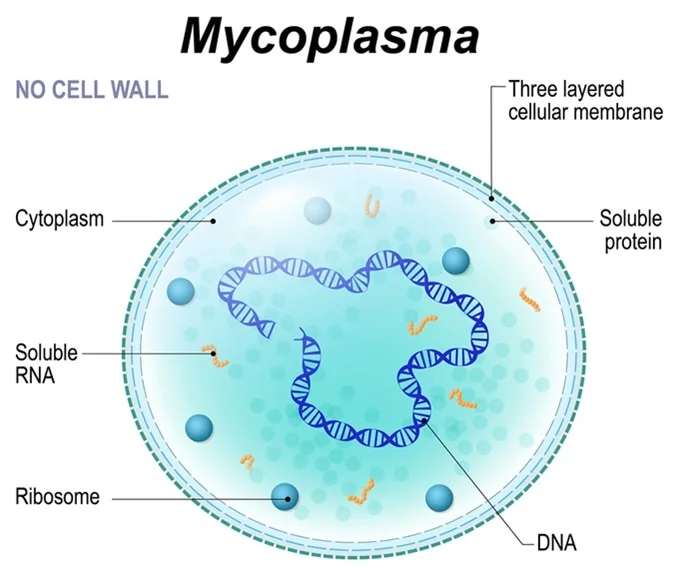Kingdom Monera and its Classification
Now today we will study the Kingdom Monera and Archaebacteria.

KINGDOM MONERA
General characteristics
- Most of them are prokaryotic and are among the smallest organisms on earth.
- The nucleus is not well organised .i.e. the nucleus lacks nuclear membrane, nucleoplasm , chromatin fibres an also nucleoli .
- Cell Lacks membrane bound organelles like mitochondria , chloroplasts ,etc.
- 70 S ribosomes are present in the cell where S is the sedimentation co-efficient.
- Photosynthetic pigments are present in the form of chromatophores.
- The plasma membrane in folds to to form the mesosome which has the respiratory enzymes .
- The monerans posses cell wall except the mycoplasma and its composed of Peptidoglycan.
- They reproduce asexually for they lack sexual reproduction.
- The genetic material consists of a single DNA molecule and not particular pattern is followed while distribution of Genetic material. A process known as Mitosis Accomplishes this.
- They are primitive organisms.
- They are present in both living and non-living environment.
- They can survive in harsh and extreme climatic conditions like in hot springs, acidic soils etc.
- They are unicellular organisms.
- DNA is in double stranded form, suspended in the cytoplasm of the organism,referred as nucleoid.
- Habitat - Monerans are found everywhere in hot springs, under ice, in deep ocean floor, in deserts and on or inside the body of plants and animals.
- Nutrition - autotrophs - can prepare their own food, heterotrophs - depend on others for food, saprophytes - feed on dead and decaying matter, parasitic - live on other host cells for survival and cause, symbiotic - in mutual relation with other organisms, commensalism - it is where one organism is benefited and the other is not affected, mutualism - where both the organisms are benefited.
- Respiration - respiration in these organisms vary, they may be obligate aerobes - the organisms must have organisms for survival; obligate anaerobes - the organisms cannot survive in the presence of oxygen; facultative anaerobes - these organisms can survive with or without oxygen.
- Circulation - is through diffusion.
- Movement - is with the help of flagella.
- Reproduction is mostly asexual, sexual reproduction is also seen. Asexual reproduction is by binary fission, sexual reproduction is by conjugation, transformation and transduction.
Classification of Kingdom Monera
There is huge controversy over the classification of Kingdom
Monera. For Now we will study two groups under kingdom Monera.i.e.
Archaebacteria and Eubacteria. Now Archaebacteria is considered as a new kingdom as per the six kingdom classification.
Archaebacteria are the Ancient bacteria which can survive in
adverse conditions while Eubacterias are the true bacterias.
Also we will study an important group of bacterias cyanobacteria.
They are the blue-green bacterias which are the oldest organisms
known.
Unique features of All the three groups we are going to study
Archaebacteria and Eu-bacteria's unique features are given in this table.
Here we are done with the characteristics of kingdom Monera and introduction to its types as cyanobacteria , archaebacteria and eubacteria. Now we will study structure classification and importance of each type in the next two posts.
For any Query or suggestion please do contact me or leave comments.
Thank you
Now the unique features of cyanobacteria are-
- they are oxygenic phototrophs.
- 'Oxygenic' means that they are able to generate and release oxygen. 'Phototroph' refers to the ability of cyanobacteria to use light photons ('photo-') for nourishment ('-troph').
- Photosynthesis in cyanobacteria is accomplished by several pigments; specifically, green chlorophyll a and blue phycocyanin are the major pigments. The color of these pigments gives cyanobacteria the common name 'blue-green algae,' but remember that cyanobacteria are not true algae.
Examples of kingdom Monera:
1. Archaebacteria-Methanococcus , Halobacterium, etc.

2. Eubacteria-Mycoplasma , Clostridium , etc.


3. Cyanobacteria-Oscillatoria , Nostoc, etc.

Here we are done with the characteristics of kingdom Monera and introduction to its types as cyanobacteria , archaebacteria and eubacteria. Now we will study structure classification and importance of each type in the next two posts.
For any Query or suggestion please do contact me or leave comments.
Thank you

Comments
Post a Comment